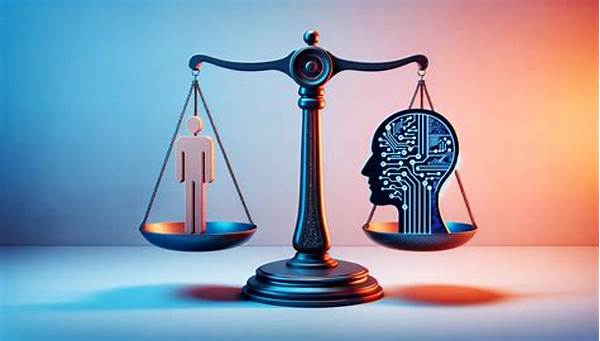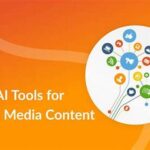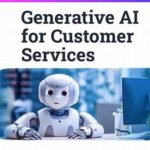In the modern landscape, the intersection of AI productivity and human creativity is akin to a tango between the logical and the imaginative. We’re in an age where Artificial Intelligence is not just a concept from science fiction but a catalyst in industries that crave efficiency and precision. From streamlining large data sets to debuting as customer service bots, AI’s potential is limitless. Yet, there’s a counterpart to this digital dexterity—our innate human creativity. Imagine a world where routine tasks are automated, leaving us with the canvas of free time to explore, innovate, and build without constraints. But let’s not be too hasty to cast AI as the mere worker bee to our human muse. The real question that buzzes around like an insistent fly is how to balance AI productivity and human creativity? A peek into data-driven reports reveals that employers and employees alike grapple with this query as they aim to harness this synergy to its fullest potential.
Read More : Why Ai Calendar Apps Are A Must-have
Picture this: AI is the meticulous architect of time and resources, crunching numbers furiously as it churns out results with the cold efficiency of a Swiss watch. Meanwhile, humans sketch vast murals of ideas, emotions, and visions that technology can’t quite grasp. How do we merge these realms? By finding the sweet spot where AI’s prowess in handling menial tasks enables humans to focus on creative endeavors. Imagine having an AI assistant forecasting market trends, while you brainstorm the next big advertising campaign that’ll make Don Draper eat his heart out. Yet, this balancing act extends beyond general utilization; it’s about each one of us identifying how AI can complement our unique skill sets rather than replace them entirely.
The Intricate Dance of Innovation
Moving beyond the realm of theoretical discourse, real-world examples abound. Take creative industries like design and art. Here, AI tools take over mundane editing tasks, allowing artists to invest their energy in crafting visionary projects. Similarly, in writing, AI can handle grammatical corrections, leaving writers free to weave narratives that resonate on a deeply human level. The collaboration is not without its challenges, as the process requires us to continue learning and teaching AI how to aid us without curbing our creative instincts. The testimony of those who have successfully merged these forces stands as a beacon—proof that mastering this balance isn’t just a pipe dream but a reality.
Welcome to a world where AI productivity holds hands with human creativity in a harmonious blend. This isn’t merely an idyllic concept resigned to some balanced utopia—it’s the here and now, addressing the ways we work and innovate. Betwixt the binary language of AI and the expressiveness of human creativity lies a fertile ground ripe for exploration. Imagine if you will, a place where AI relieves us of mundane tasks, giving humans the bandwidth to venture into uncharted creative territories. This marriage of efficiency and creativity can lead to newfound successes and countless possibilities.
In our everyday lives, AI’s presence is becoming increasingly pervasive. From personalized recommendations on Netflix to virtual assistants setting our schedules, the benefits are tangible. Yet, as professionals, a nagging question often looms—how do we maintain a balance that complements rather than constrains our creativity? AI can be a powerful ally, enabling us to transcend the limitations of time and resources. It comes down to allowing AI to handle the repetitive, while reserving our uniquely human skill of creativity for problem-solving and innovation.
Real-World Impacts
Every industry is ripe with stories of breakthroughs thanks to AI and creativity joining forces. Whether it’s healthcare where diagnostic AI systems enable doctors to focus on patient care, or retail where AI analytics allow marketing teams to tailor creative campaigns, the benefits are clear. The key is skillfully navigating this relationship, employing AI without overshadowing the inventive spark that drives innovation.
Finding the Synergy
Successful integration of AI in any creative process is a journey of discovery. It’s about understanding what AI can offer and how best to utilize it to enhance rather than hinder. By actively engaging with this integration, professionals open doors to new ideas that may have been previously out of reach. AI becomes less an intimidating competitor and more an invaluable teammate.
Harnessing the power of AI and channeling it through creative endeavors allows for cutting-edge results. Yet, it’s not only about what we gain but also what we must continue to debate—where does efficiency call the shots, and when does creativity reign supreme?
Cutting-edge innovations and heartwarming tales intersect when discussing how to balance AI productivity and human creativity. One may equate this to a crossroad where efficiency meets essence. On one hand, we have CEOs marveling at AI’s ability to streamline operations, while on the other, artists express concerns over its encroachment into domains fueled by imagination and emotion.
Amidst these narratives, numerous organizations find themselves navigating uncharted terrain. It’s essential to approach this balance with agility and openness, viewing AI not as a substitute but an instrument that amplifies human capacity for creativity. The goal is to hand AI the blueprint of repetitive processes, sparing human minds the burden of the mundane. Yet this transition doesn’t come without its set of ethical and practical considerations. Institutions need to ensure a human touch remains in decision-making processes and that AI’s role is supplementary rather than primary.
By fostering an environment that values both AI productivity and human creativity, we stand to redefine what is creatively possible. Professionals are poised to be heroes within this narrative, skillfully wielding AI as an enabler, not just a tool. Through shared stories and testimonials, a tapestry emerges, blending AI’s promise with humanity’s timeless ingenuity.
Unlocking Potential
The inevitability of AI’s presence shouldn’t overshadow human inventiveness. Finding innovative ways to incorporate AI tools into existing frameworks can result in enhanced creativity, unlocking potential previously deemed unreachable. Companies that harness AI’s strengths while fostering creative environments are more likely to succeed in this dynamic landscape.
A New Age of Creativity
In conclusion, striving toward a balanced future where AI productivity and human creativity coalesce will lead to advances not only in technology but also in the arts and humanities. Illustrating a synergy as complementary rather than combative, offers manifold opportunities for growth and innovation. As we stand at this crossroads, where will you position AI—as a competitor or as a powerful partner in your creative journey?
Humor meets insight in understanding how to balance AI productivity and human creativity. Let’s get to the nitty-gritty, shall we? Envision a workplace buzzing with innovation and ideas, where deadlines are met not by burnout, but by leveraging AI’s capabilities to manage mundane tasks. Human creativity thrives in environments rich with autonomy, where imagination isn’t just valued—it’s required.
In industries across the spectrum, AI stands ready to handle the grunt work, allowing humans to flex their creative muscles. The symbiosis is not without challenges; striking a balance demands vigilance and adaptability. Nonetheless, by managing AI interventions with a deft touch, employees are liberated to delve into more complex problem-solving and innovate free from the malaise of routine.
The Dual Nature of Technology
AI and creativity do not exist in a vacuum; they’re intertwined with varying degrees of cooperation and competition. In the journey to balance AI productivity and human creativity, organizations must instill a culture that appreciates the strengths of both. By designing systems where AI complements creativity, organizations can foster innovation and stay ahead of the curve.
Implementing Change
Meaningful change occurs when workers are empowered with AI-driven tools that augment their strengths. These tools must serve as facilitators rather than overseers. Organizations must promote continuous learning to adapt to new AI advances, allowing human workers to harness AI’s potential creatively and efficiently.


